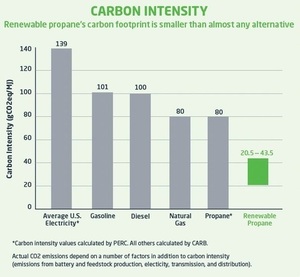DOE’s Hydrogen Program Plan addresses biobased hydrogen sources
Energy Disrupter
ADVERTISEMENT
The U.S. Department of Energy on Nov. 12 released its Hydrogen Program Plan to provide a strategic framework for the agency’s hydrogen research, development and demonstration (RD&D) activities. The plan addresses hydrogen sourced from biomass and waste sources, fossil resources and water-splitting technologies.
According to the DOE, the Hydrogen Program is departmental effort to advance the production, transport, storage, and use of hydrogen across different sectors of the economy. It involves participation from the Offices of Energy Efficiency and Renewable Energy, Fossil Energy, Nuclear Energy, Electricity, Science, and the Advanced Research Projects Agency-Energy. The plan serves as the overarching document to set the strategic direction of the Hydrogen Program, and to complement the technical and programmatic multi-year plans from each DOE office engaging in hydrogen RD&D activities.
“Hydrogen is an exciting fuel source that has the potential to integrate our nation’s energy resources, but to fully recognize its potential across the economy, we need to lower costs and see a significant increase in hydrogen supply and demand,” said U.S. Secretary of Energy Dan Brouillette. “This administration is excited by the Department-wide efforts and collaborations outlined in this Plan that will address these issues and help secure hydrogen as an option in the nation’s energy future.”
Regarding biogenic sources of hydrogen, the DOE notes that options include biogas reforming and fermentation of waste streams. Clean water, electricity and chemicals could be produced as a bioproduct of biobased hydrogen production.
The agency said there is the potential for more than a billion dry tons annually of domestic biomass and waste-stream resources that could be used to produce hydrogen. Feedstocks include primary biomass energy sources, such as poplar, willow and switchgrass, as well as biogas from anaerobic digestion or landfill sources. According to the DOE, primary biomass can be gasified using well-established technologies, or even co-fed with coal or waste plastics in the gasification process. It can also be processed into bio-derived liquids for subsequent reforming into hydrogen. When coupled with carbon capture technologies, there is potential to produce carbon-negative hydrogen. Biogas, with additional cleanup requirements, can be reformed to produce hydrogen using a process similar to steam methane reforming (SMR). In addition, the DOE noted that certain waste-stream feedstocks can be used to produce hydrogen through biological-based processes such as fermentation and microbial assisted electrolysis, or through novel thermal and non-thermal plasma-based processes. Depending on feedstock availability and cost, the DOE said some approaches, including gasification and steam reforming of biomass and waste-streams, may be economically competitive in the near term. To enable broader adoption, however, the agency said RD&D is needed to address challenges for both near-term and longer-term technologies, including improvements in conversion efficiency and reductions in the cost of pretreating and transporting feedstock.
A full copy of the DOE’s Hydrogen Program Plan can be downloaded from the agency’s website.
















